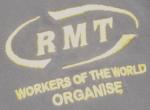What is a National Executive Committee decision?
This article is an 'executive decision' which has been written by the RMT National Executive Committee. The National Executive is the union's governing body in between AGMs. Its decisions set out what the union will do on a particular issue.
These decisions can often be brief, and may be one of several passed over a period of time. To get a better understanding or find out more information about what the RMT is doing, speak to your rep or attend your branch or Regional Council meeting.
Similar topics:
This report was adopted by the RMT Council of Executives at its December Statutory meeting:
I attended this conference as a member of the ETF Women's Committee, and was the only UK trade unionist present as a delegate. This was the final conference of the 'Bargaining For Equality' project, which we had not, to my knowledge, been aware of until now. The Project sought to address inequality in men's and women's wages, and to identify collective bargaining strategies that would tackle these inequalities.
The conference consisted of two days of presentations and discussions. I can provide copies of all documentation and slideshows on request. These gave some valuable insights into the persistence of the gender pay gap (ie. the gap between men's and women's earnings).
What is the Gender Pay Gap?
Across the European Union, the unadjusted gender pay gap (difference in average gross hourly earnings) narrowed from 17.6% in 2007 to 16.2% in 2011. In terms of take-home pay, the gap will be wider, as women tend to work fewer paid hours due to unpaid caring responsibilities. The gender pay gap narrowed in 16 out of 25 countries (the largest reductions were in were in Lithuania, the Netherlands and Slovenia; moderate reductions were in Denmark, Cyprus, Malta, Poland, Sweden, Slovak Republic and UK; and less than 1% decline in Belgium, France, Finland, Luxembourg, Romania and Spain).
It is - or at least it should be - shocking that such inequality still exists. The gender pay gap is gradually narrowing: but firstly, not nearly fast enough, and secondly, part of the reason for this is lowering of men's wages during the economic crisis. We want the gap to close through levelling up.
Factors in the Gender Pay Gap
It is estimated that between 10% and 15% of the cause of the gender pay gap is a result of discrimination. Other factors that impact on the gender pay gap include:
- bargaining coverage and the way that pay is set
- unequal balance of work and family and a lack of flexible working arrangements, which result in a ‘wage penalty’ for women workers
- women’s over-representation in casual, temporary, part-time and low paid work
- a segregated workforce where women are clustered into lower-paid and lower-valued occupations and sectors
- gender socialisation
- the ‘glass ceiling’ and the under-representation of women in higher paid jobs
- level of the legal minimum wage
- level of overall equality in a particular country
- the degree of overall pay inequality ie. the greater the difference between high and low pay rates in a country, the wider the gender pay gap also tends to be.
Calculating the Gender Pay Gap
There are various techniques available for working out the gender pay gap, including in specific industries and employers. We can make use of these tools to better understand the gender pay gap in our industries.
Bargaining strategies
Collective approaches result in better employment conditions and a smaller gender pay gap. The conference discussed union measures to address pay inequalities between women and men, looking at several case studies.
Many unions have put in place strategies and policies to fight for reduced pay inequalities between women and men; and many have put in place training and guidelines for collective bargaining teams, and measures to improve the representation of women in collective bargaining.
Effective trade union collective bargaining strategies include:
- ascertaining information about the gender pay gap; demanding information from employers
- assessing both the union's pay claim and the employer's offer for their impact on the gender pay gap
- opposing performance-related pay and reliance on overtime
- highlighting the demand for flat-rate pay increases
- tackling issues that have been shown to narrow the gender pay gap eg. improved childcare / work-life balance
I asked whether studies had been done on the impact on the gender pay gap of campaigning and industrial action demanding better pay for eg. contract cleaners. The response was that while there was no detailed study, it was almost certainly the case that campaigning helps to narrow the gap by raising women's wages.
Recommendation: We should ascertain the gender pay gap in the industries and companies where we organise. We should adopt approaches in collective bargaining that will reduce the gender pay gap through levelling-up, as itemised above.
PS. November 7 was Equal Pay Day in the UK ie. the day on which, due to the gender pay gap, women in effect stop being paid for the rest of the year.
What is a National Executive Committee decision?
This article is an 'executive decision' which has been written by the RMT National Executive Committee. The National Executive is the union's governing body in between AGMs. Its decisions set out what the union will do on a particular issue.
These decisions can often be brief, and may be one of several passed over a period of time. To get a better understanding or find out more information about what the RMT is doing, speak to your rep or attend your branch or Regional Council meeting.
- 5517 reads






